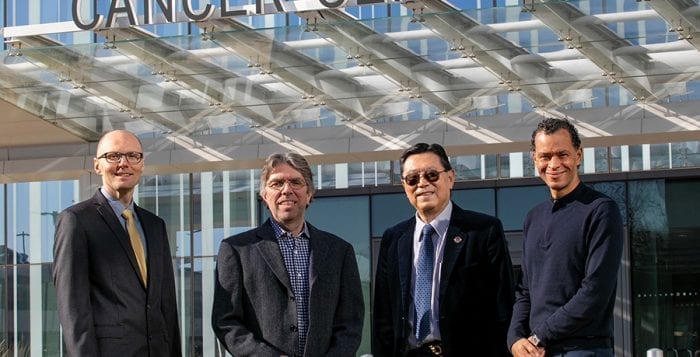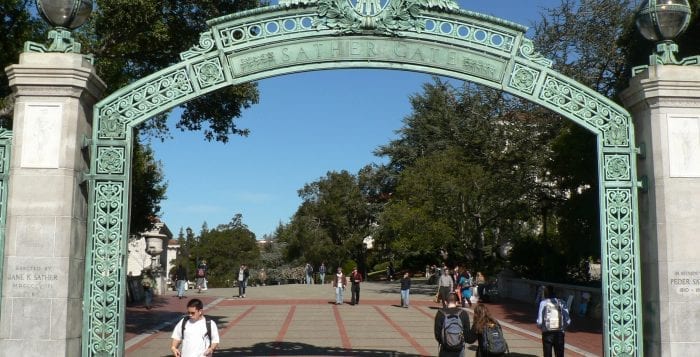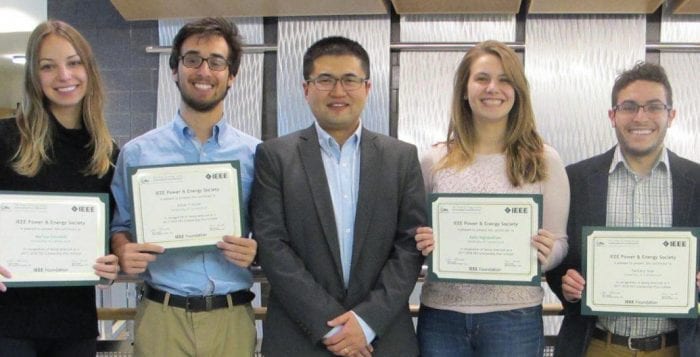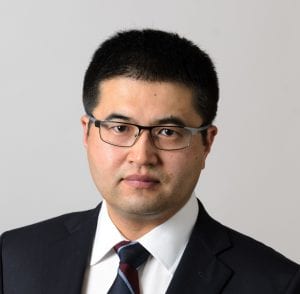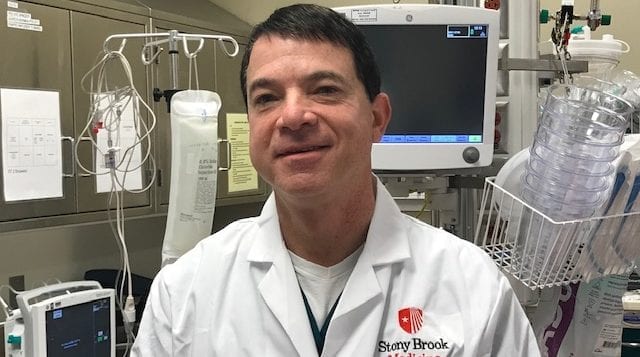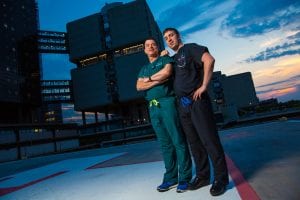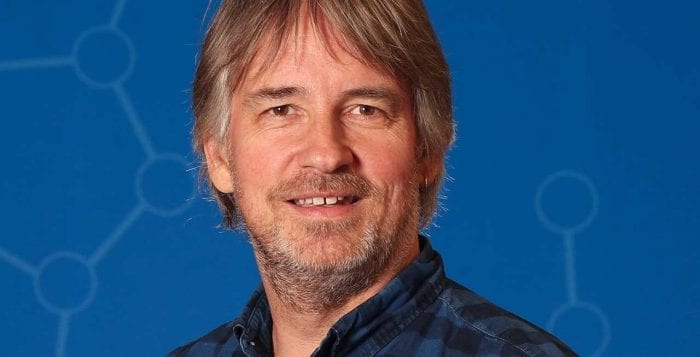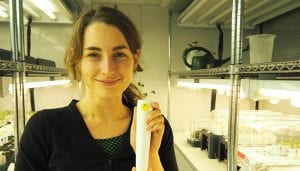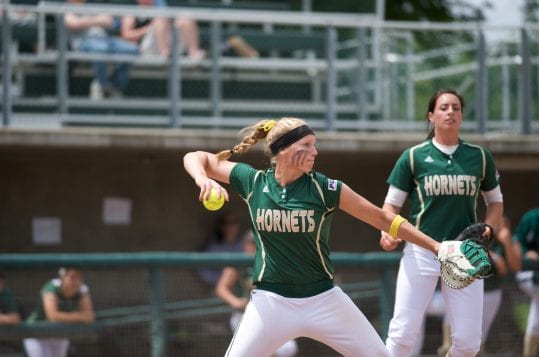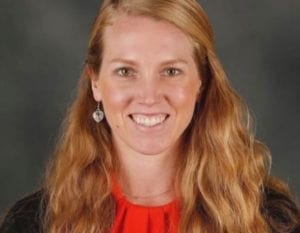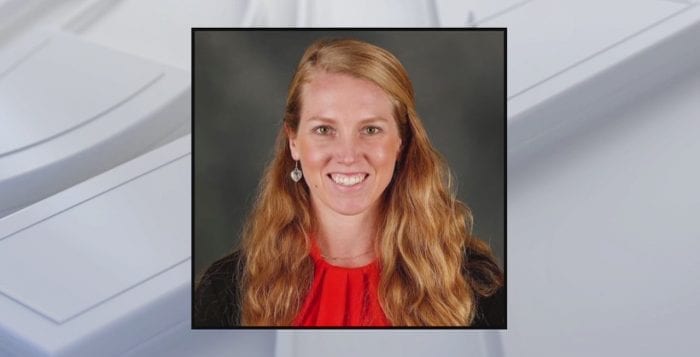By Daniel Dunaief
Pulling together experts from a variety of fields, scientists at Stony Brook University and Cold Spring Harbor Laboratory have demonstrated promise in their efforts to tackle prostate cancer in a new way.
Led by Iwao Ojima, a distinguished professor of chemistry and director of the Institute of Chemical Biology and Drug Discovery at SBU, and Martin Kaczocha, an assistant professor in the Department of Anesthesiology at SBU, the multidisciplinary team recently received a five-year, $4.2 million grant from the National Cancer Institute.
The team is following up on its preliminary success with inhibitors of fatty acid binding protein 5, or FABP5. By tamping down on this protein in prostate cancer cells grown in the lab and in mouse models of the disease, these researchers treated metastatic cancer cells.
The scientists, who received a Translational Research Opportunities Seed Grant from the Renaissance School of Medicine at Stony Brook, were pleased with the next steps in their research.
“We’re happy that the National Cancer Institute validated our target,” said Kaczocha. It will help us “move forward and expand the scope of our work.”
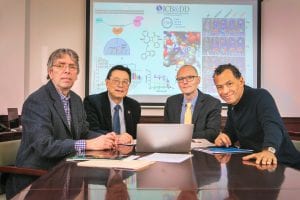
To be sure, scientists are generally cautiously optimistic about the translation between basic discoveries about mechanisms involved in cancer and the ability of doctors to use these findings in future therapies. Indeed, numerous promising early efforts haven’t always led to treatments. “Many tumors develop resistance to existing therapies through a variety of mechanisms,” said Kaczocha.
Still, the researchers involved in the current study hope the findings will eventually provide another tool in the treatment of prostate cancer.
The inhibitors scientists including Lloyd Trotman, a professor at Cold Spring Harbor Laboratory, are testing “appear to work in a context where [other treatments] lose efficacy. We hope this will translate” to a setting in which the researchers test their treatment in a mouse model of prostate cancer, explained Kaczocha. One of the goals of the NCI grant is to find further validation of this benefit.
Eventually, any possible treatment that utilizes these findings would involve a combination of inhibitors and existing therapeutics, Kaczocha said.
To create a product that might target this molecule, Ojima screened more than one million commercially available compounds on a computer. Out of over 1,000 compounds designed and analyzed, he selected about 120 for chemical synthesis and biological assay.
Artificial intelligence helps dig out known matters from a huge data, but not for newly created substances. Ojima found more than 30 compounds from the ones he synthesized and tested that were more advanced than the original project.
“It’s an ongoing process,” Ojima explained, adding that he believes he will find a more efficacious inhibitor. Ojima and Kaczocha are working with Robert Rizzo, a professor in the Department of Applied Mathematics & Statistics at SBU to develop these inhibitors.
Indeed, that process involves determining the stability, bioavailability and many other factors to minimize any adverse side effects
The side effects from this treatment connect to the original focus of the scientific team. As it turns out, inhibiting FABP5 causes pain relief because it reduces the breakdown of anandamide, or AEA, which is part of the body’s natural pain relief system. The inhibitors also have anti-inflammatory properties.
“This compound’s side effect is pretty beneficial for patients,” said Ojima.
The Long Island team is continuing to pursue the use of these compounds to manage pain as well.
Indeed, Kaczocha’s mother Zofia, who has pain associated with arthritis, asks him at least once a month when his drug will be available. The NCI grant will enable him and his colleagues to continue to build on their earlier work as they hope to translate their scientific discoveries into a clinical option.
“We are continuing our original research on the use of FABP5 inhibitors for pain control,” Ojima explained in an email.
As for their work with cancer, the inhibitors are “less cytotoxic,” Ojima said, and, in animal models, have been able to kill metastatic cancer cells that have become resistant to drug treatment. He suggested that the hope of this treatment is that it can sensitize the cancer cells or tumor to other therapies, which is a “promising approach.”
So far, Ojima, Kaczocha, Trotman and colleagues have tested this treatment only on tumors that haven’t yet metastasized, and not on tumors that have spread to other organs. “Our hope is that it may have some preventive effect in the early stages” of metastasis, Ojima said.
Ojima and Kaczocha were grateful for the seed grant from the medical school, which helped push the research forward. “A seed grant is very important for basic research,” Ojima added.
Other cancers, such as breast cancer, also have over expression of the same fatty acid binding protein. While the scientists are starting with prostate cancer, they hope to expand their work to other cancers as well, once they start gathering results.
La Jolla, California-based Artelo Biosciences partnered with these researchers starting in the spring of 2018. Artelo is licensing the patents for the target as well as the patents for lead compounds. Moving any compound through the beginning of the Food & Drug Administration testing is something Artelo will eventually take over, Kaczocha said. “They will have the financing to pursue this further,” he added.
As a researcher and a pharmacologist who is involved in basic and translational studies, Kaczocha said his hope is always to develop something in his career that will help patients.
Other research groups are also developing small molecule inhibitors to reduce the prevalence or activity of fatty acid binding proteins, but these other scientists have generally not focused on the role of these proteins in cancer. Fatty acid binding protein 4, for example, has a role in metabolic disorders.
“We have a relatively unique position where we are targeting prostate cancer” by reducing the activity and effect of this protein, Kaczocha said.
Trotman, whose lab has a unique animal model of prostate cancer that is a close mimic to the progression of prostate cancer in humans, offers an advantage in their research work, added Kaczocha.

